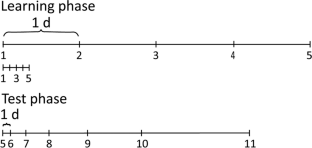2024-08-07 ニューヨーク大学 (NYU)
<関連情報>
- https://www.nyu.edu/about/news-publications/news/2024/august/lemurs-memory-smell-social.html
- https://link.springer.com/article/10.1007/s10764-024-00448-0
茶色のキツネザル(Eulemur spp.)カンタロープメロンを手に入れるための嗅覚、記憶、社会的戦略の利用 Brown Lemur (Eulemur spp.) Use of Olfaction, Memory, and Social Strategies to Obtain Cantaloupe
Elena P. Cunningham,Malvin N. Janal,Rachelle Wolk & Maria Gonzalez-Robles
International Journal of Primatology Published:31 July 2024
DOI:https://doi.org/10.1007/s10764-024-00448-0

Abstract
The ability of primates to make decisions by integrating sensory information, memories about their environment, and social factors may have played a role in the evolution of primate cognition. However, we know little about the ability of lemurs to consider multiple aspects of a problem. We conducted experiments on the use of memory and olfaction in 11 groups of captive brown lemurs (Eulemur spp). We placed six or nine containers, 1/3 of which we baited with two pieces of cantaloupe, in consistent locations in the lemurs’ enclosures. We used two schedules for five initial trials, with delays of 2 h or 1 day (i.e., with nocturnal sleep) between trials. We conducted subsequent trials after 1, 2, 4, 5, 7, and 14 days. We recorded the order in which lemurs investigated and opened containers. We also noted social interactions, scent marking, and the number of pieces of cantaloupe eaten. The probability that lemurs would investigate baited containers before empty containers increased from chance levels on the first trial to approximately 0.5 above chance by the 6th and later trials, indicating the use of memory. The initial schedule did not significantly affect performance. Lemurs opened 98% (273 of 278) of baited containers before empty containers, indicating the use of olfaction at close range. They scent-marked in the proximity of only 10% of baited containers. Dominant status and being first to investigate baited containers positively impacted cantaloupe consumption. The results suggest that the lemurs integrated spatial memory, olfactory cues, and social information in decision-making.


